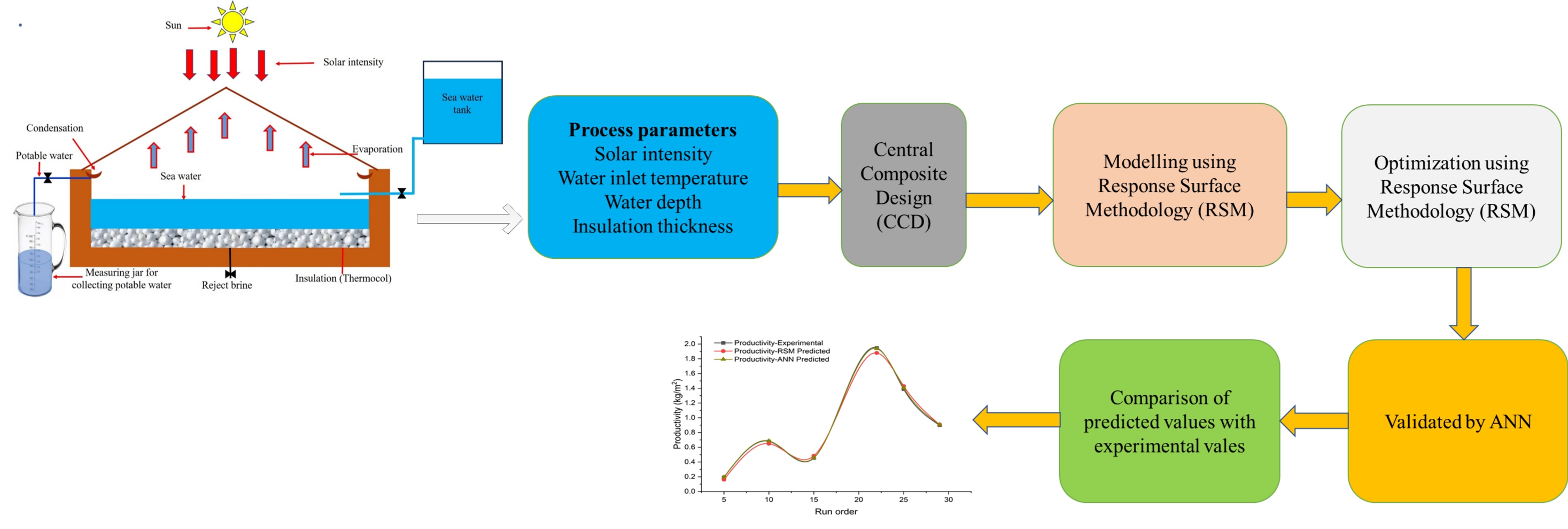
Potable water is essential in various aspects of daily life. Converting brackish water to drinkable water using traditional methods is costly and has environmental impacts. Solar energy is preferred over fossil fuels and other energy sources due to its cost and environmental benefits. Solar stills are increasingly popular due to the growing need for drinkable water, but their performance requires improvement. The study examines the pyramid solar still (PSS) productivity using different operating parameters, such as solar intensity (350-950 W/m2), water inlet temperature (30-50°C), water depth (4-8 cm), and insulation thickness (0.05-0.15m). The response surface technique (RSM) was used to examine the performance of the still under different operating conditions. The RSM approach optimized the process for maximum output and reduced testing time and effort. To verify the optimum response derived from RSM, the artificial neural networks (ANN) model was implemented. The comparative studies of the ANN and RSM models demonstrates a strong correlation with the outcomes achieved in maximizing the productivity of PSS. It found that the ideal values for solar intensity, water intake temperature, water depth, and insulation thickness are 950 W/m2, 50°C, 4 cm, and 0.15 m, respectively. These parameters contribute to the production of 2.585 kg/m2 of distillate.
Total file downloads: 15